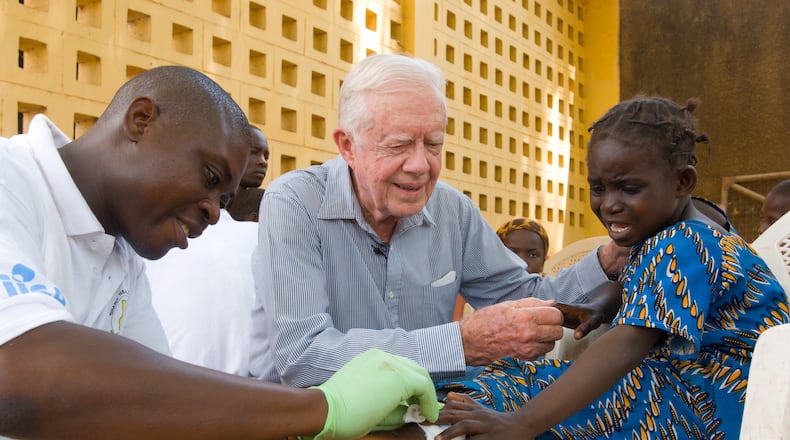The Carter Center and its partners reported continued progress in the global Guinea worm eradication campaign.
The nonprofit targeted the parasitical disease in 21 countries of Africa and Asia in 1986 and took a leadership role to make it happen.
If successful, it will be only the second disease in history, after smallpox to be eradicated.
A count in 1991 showed that 23,735 villages reported cases of Guinea worm disease, which occurs when people drink water contaminated with Guinea worm larvae.
In 2017, only 20 villages in two African countries provisionally reported cases of Guinea worm disease. The villages in Chad and Ethiopia counted a total of 30 cases among them. Provisional numbers are reported monthly by the ministries of health of the remaining endemic countries and compiled by The Carter Center.
The Republic of Mali has recorded zero human cases of Guinea worm disease for 25 months in a row, a major accomplishment. The Republic of South Sudan has reported zero cases for 13 consecutive months, also a major accomplishment for the world’s newest country.
The Carter Center is also involved in eradicating cases of Guinea worm in animals, which was first observed in a small number of dogs in Africa.
The Carter Center’s work is paid for by donations from foundations, corporations, governments, and individuals.
READ: What else is Jimmy Carter known for? A timeline of 10 major accomplishments
About the Author
Keep Reading
The Latest
Featured


